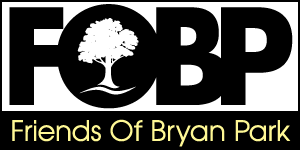Native Plants in Bryan Park
There are many native plants to be found in Bryan Park, from tiny little bluets to towering oaks. These plants provide food and cover for all the wildlife found here, and form the basis of a rich ecosystem. Not only are native plants adapted to survive in our local climate and geography, but over the eons they have formed complex relationships with local wildlife.
Most songbirds need insects to feed their young, and most insects will only eat the plants they evolved to eat. One of the best foods for baby birds is caterpillars, but caterpillars won’t eat nonnative plants; they will only eat their host plants. Studies have shown it takes 6000 to 9000 caterpillars to raise just one clutch of tiny chickadees - that’s a lot of caterpillars!
As well as playing a vital role in providing food and shelter for our wildlife, native plants are better adapted to local environmental conditions, needing less watering and other maintenance. They have long, deep root systems that hold soil in place and mitigate damage from floods and drought, as well as helping to filter rainwater. There is no need for fertilizers or pesticides, as they are more resistant to insects and disease.
You can find many native plants in the three native plant gardens maintained by the Riverine Master Naturalists on the north edge of the park. Here is a partial list:
Golden-alexanders - Zizia aurea
Common Yarrow - Achillea millefolium
Wild Columbine - Aquilegia canadensis
Yellow Wild Indigo - Baptisia tinctoria
Milkweeds - Asclepias
Joe-pye-weed - Eutrochium
Sunflowers - Helianthus
Beebalms - Monarda
Woodland Phlox - Phlox divaricata
Mountain Mints - Pycnanthemum
Coneflowers - Rudbeckia
Wild Senna - Senna marilandica
Goldenrods - Solidago
Asters - Symphyotrichum
Spiderwort - Tradescantia virginiana
Splitbeard Bluestem - Andropogon ternarius
Red Chokeberry - Aronia arbutifolia
American Hazelnut - Corylus americana
There are also many naturally occurring native plants in Bryan Park. Most of our trees are native, including numerous large oaks, loblolly pines, hickories, tulip poplars and American holly, with an understory of dogwood and native shrubs. Near the pond edges you will find elderberry, box elders and bald cypress. Other wild grown natives include:
Arrow-wood - Viburnum dentatum
Spotted Wintergreen - Chimaphila maculata
Pussytoes - Antennaria plantaginifolia
Wild Azalea - Rhododendron periclymenoides
Maryland Golden-asters - Chrysopsis mariana
Black Raspberry - Rubus occidentalis
Poison Ivy - Toxicodendron radicans
Virginia Creeper - Parthenocissus quinquefolia
Trumpet Vine - Campsis radicans
Spring Beauties - Claytonia virginica
Wild Strawberry - Fragaria virginiana
Common Bluets - Houstonia caerulea
Evening Primrose - Oenothera biennis
Pickerelweed - Pontederia cordata
Solomon’s Seal - Polygonatum biflorum
Lizard’s Tail - Saururus cernuus
Strawberry Bush - Euonymus americanus
Deerberry - Vaccinium stamineum
Carolina Elephant’s Foot - Elephantopus carolinianus
Devil’s Walking Stick - Aralia spinosa
Passionflower - Passiflora incarnata




